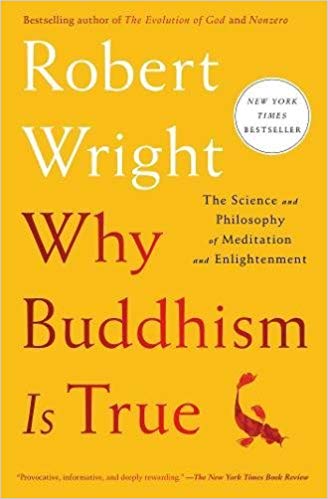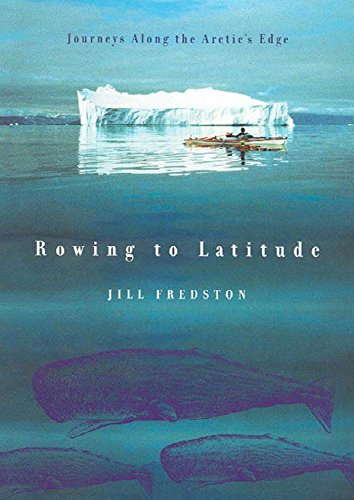I am far behind on my posts about books I’ve read. I think the reason is that I was stuck on what to write about the book that is next in the queue, Why Buddhism is True, by Robert Wright. It isn’t that I didn’t like the book—I enjoyed it. But I was struggling to figure out what I should say about it.

Usually, I write about a new idea or ideas I took from the book. In this case, though, I didn’t really come away with any big new ideas. This is not a fault in the book, but rather an indictment of my own relationship with meditation. I have read many books and listened to many podcasts about the benefits of meditation. I even have personal experience that tells me it would be good if I could build and sustain a meaningful meditation practice: I did it once before, and I noticed a definite improvement in my outlook, mood, and feeling of well-being.
Why Buddhism is True is about more than meditation, but meditation is at the core of its arguments. And I find its arguments compelling! But they did not compel me to restart my long dormant meditation practice. Well, I tried briefly… but I have already dropped the attempt.
If I know from past experience that meditation is beneficial to me, and I am convinced by arguments about its benefits, why do I struggle to restart a meditation practice? A book that could answer that question would be very useful!
That is perhaps too flippant, because this book contains the core truth that underlies the answer to that question: Meditation is hard. There is a reason it we call it a meditation practice and not, say, a “meditation habit.” I particularly struggle with meditation that requires me to sit still. When I had a meditation practice, it was coupled with a yoga practice and that worked well for me. I think I might be able to sustain a walking meditation practice and should perhaps look into that more. But that is a topic for a different sort of post.
This post is about books, so I will instead write about another book I read and have been meaning to write about here – Rowing for Latitude, by Jill Fredston. This wasn’t a book I read intending to write about here. It was a book my book club picked and I read at first somewhat reluctantly. It won me over within the first few pages, though. Fredston’s writing is very good, but what won me over was her viewpoint. She is a woman living life on her own terms, and may in fact embody the sort of the insights about how to live a good life that I’ve been looking for in my reading project here.

Fredston lives in Alaska, where she is an avalanche specialist. The book is about how she spends her summers: rowing in arctic waters with her husband. The descriptions of her journeys are wonderful travel writing, that made me—an avowed hater of the cold and all around wuss when it comes to physical endurance—almost understand the appeal of her journeys.
What I really loved about the book, though, were the larger points about life that were woven into her stories. I have already written over on my travel site about how the book reminded me of the allure of the “big trip” (as opposed to a standard vacation). I have also been thinking about her description of our culture’s overemphasis on consumption and economic productivity. I am obviously not opposed to productivity: I have written a lot about how I manage my time to be more productive. But my goal in that is always to be more productive during my working hours to make more space for other things in my life, i.e., to make my work hours more productive so that there can be fewer of them and more hours for family, friends, hobbies, and all of the other things that bring joy to my life. I think our culture twists the goal of being productive and takes it to an extreme, such that many people are aiming to just be as productive as they can possibly be, nevermind anything else. I think that is short-sighted and unhealthy, and I found Fredston’s thoughts on the topic interesting. For instance, she writes:
“By the time I reached the sea, I knew that I could do far worse than to live life like the Yukon: Keep moving but find places to slow down.”
(“The Yukon” here refers to the Yukon River, which she rowed the length of one summer.)
I was also really struck by the meditative quality of her journeys. On a good day, she and her husband spend hours rowing. On a bad day, they might be trapped inside their small tent by a raging storm. Somehow, Fredston manages to take both types of day as they come. Her journeys force her to live in the moment, because it can be very dangerous if her attention slips from the moment. She might misread a wave or miss the signs of a bear in the vicinity. Beyond that, though, there seems to be a way that the rhythm of the journey expands her mind:
“In my most satisfying moments, I see time as a river, the way the Yukon and the elders along it taught me. The water keeps moving whether I stand on the shore and watch it flow by, let myself get carried by the current, or actively steer a course down or across the river’s shifting channels.”
Most of the chapters are about her time on the water, but I found the chapter about her life as an avalanche expert equally fascinating and instructive. The chapter tells the story of a particularly brutal “avalanche season,” in which many people died. It is very clear-eyed about risk, and how familiarity and experience can blind us to the true risk various hazards pose.
I liked her definition of risk: “Risk is the hazard multiplied by the consequences— in other words, what might happen if something goes wrong.” I apply this definition all of the time in my life, both professional and personal. Still, her reminder about how growing expertise can lead you to under-appreciate the true risk you face brought me up short. I know I do that more often than I should. She shares a quote about why we should guard against that outcome, from a Swiss avalanche expert who once watched his own son get injured in an avalanche on a slope he had rated as safe:
‘”So you see,” the old man admonished the audience, “The avalanche, it does not know you are an expert.”‘
Fredston’s hours on the water have clearly taught her a lot about life, and the magic of the book is that she somehow conveys those lessons to the rest of us without requiring us to expend any physical labor or face any hardships. Towards the end of the book, she writes:
“Take it one stroke, one mile, one hour at a time. Be patient, let events evolve, take things as they come. You’re not in charge. Breathe, find a rhythm, stay loose, balance the boat, keep pulling.”
This is a lesson from her rowing, but she is applying it to a different challenge in her life, and inviting us to apply it to the challenges in our lives. It is good advice.
Be First to Comment